When I realised our reef here on Norfolk Island was in trouble, I decided I had to do something. As they say, you can catch more flies with honey than with vinegar, so I wanted to raise awareness in a positive way. My ‘thing’ took the form of a website dedicated to the reef, with beautiful images and short easy-to-read blog posts. It’s not a perfect thing, but it’s a start. The website catalogues every kind of fish – as well as corals, anemones, nudibranchs, turtles and much more – that I’ve seen in the last 18 months while doing my ‘lap’ swimming in the wild, in Norfolk’s lagoons.
What has taken me down this path, from a day job as a writer, editor and communicator, to creating this resource?
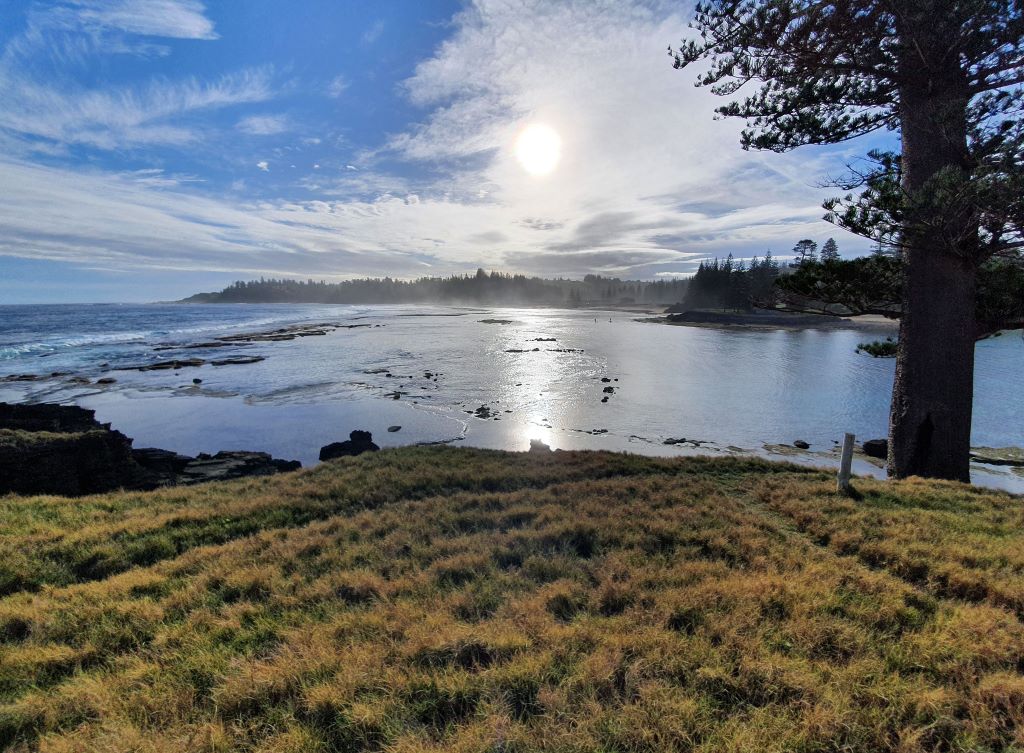
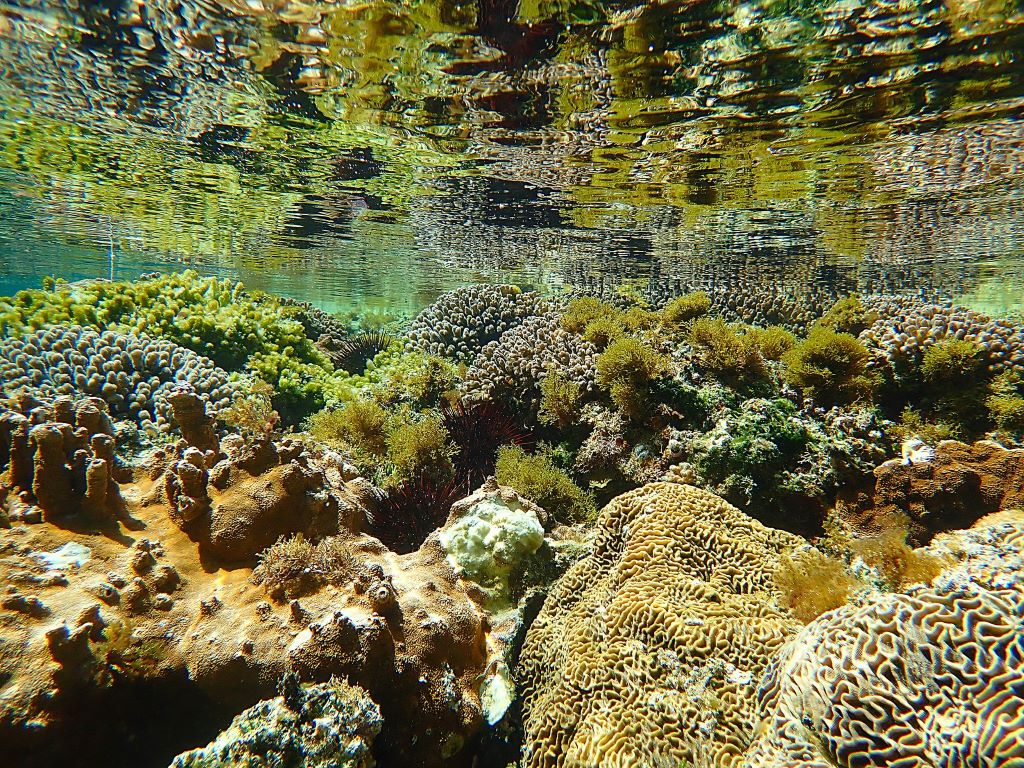
Although we have glass-bottom boat tours available to visitors, at a deeper level, I feel that Norfolk Island’s reef sometimes gets overlooked, overshadowed by the stunning beauty and intriguing history of the island above water. Norfolk Island’s lagoons are unique. Not only does the island feature one of the most southerly coral reefs in the world, but it is also surrounded by an Australian Marine Park, which directly abuts the World Heritage Australian Convict Property of Kingston. Kingston is an area of significant historic value and bucolic beauty.
I lived on Norfolk Island for a period of almost five years in the late 1990s, returning here permanently three years ago. I’ve loved to be in the water ever since I learned to swim as a child. When I was living on the island back in the 90s, I’d squeeze my daily swims around part-time work and being a mum to two young girls.
I’d swim out to the reef, often with a small child – or two – hanging onto my back so they could peer into the depths and see the amazing wonders there as well. I recall pointing out shy moray eels, cheeky smoky pullers and colourful wrasse. One year, I even made a birthday cake for one of the girls modelled on George, the ‘rainbow’ wrasse. (I now realise he was actually a terminal phase surge wrasse, Thalassoma purpureum – terminal phase meaning that the female-born wrasse has completed its transition to become fully male – but, heh, ‘rainbow’ sounds so much prettier to little girls!)
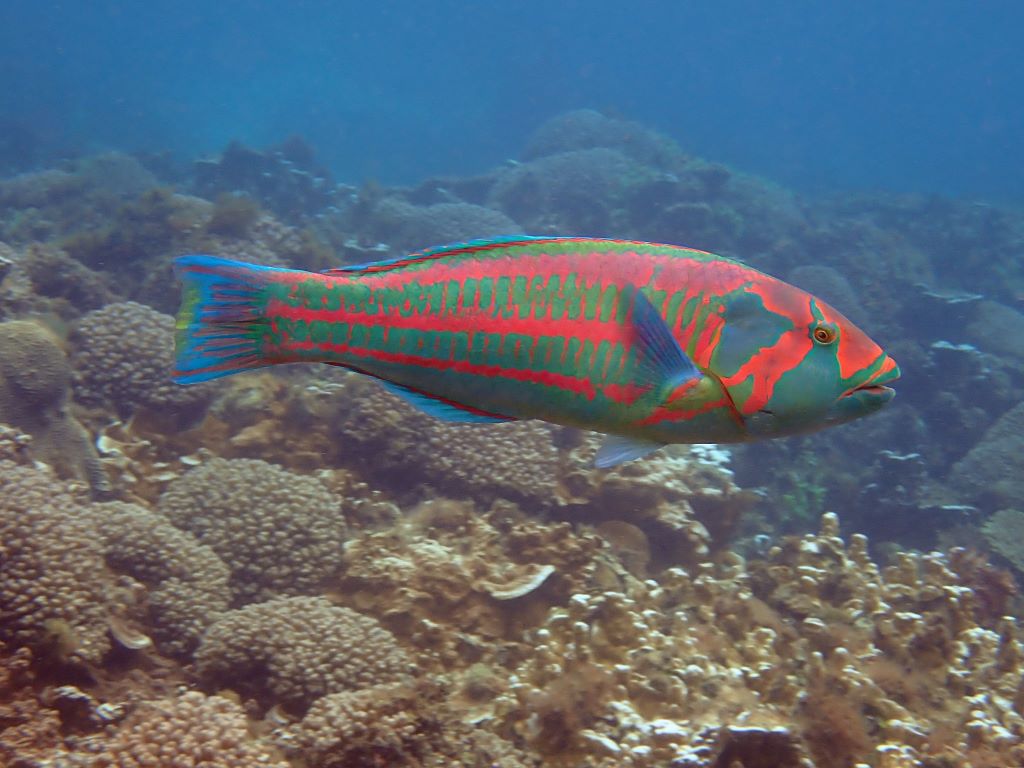
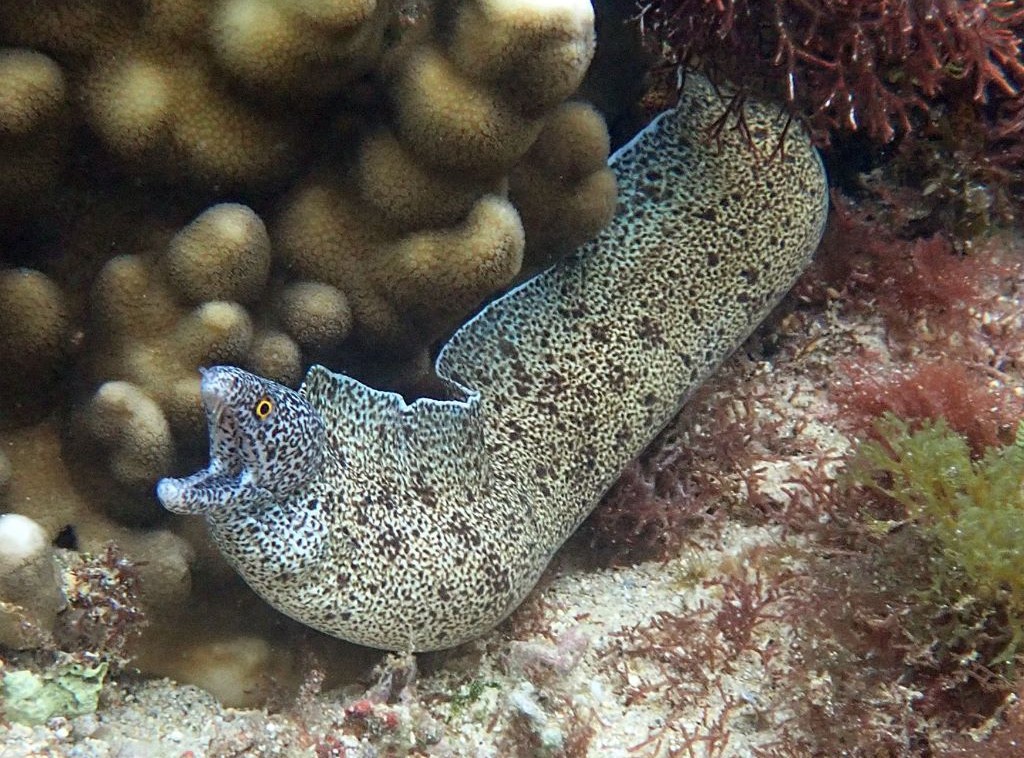
Great schools of fish swirled round the bombies near the Salt House. Massive plate coral colonies, Acropora, in tiered layers like apartment blocks, rose up on either side of the sandy channel. Where there is good healthy Acropora you will have plenty of fish life because it provides a perfect hidey-hole habitat. I’d often see the giant sea snails, members of the Tonnidae family, half-buried in the sandy stretches in the deeper areas of the channel too. Even the raft in the middle of Emily Bay was a wonder, providing shelter to new generations of scissortail sergeants, eastern footballers and Norfolk cardinalfish.
Fast forward twenty years. Coming back as an empty nester and working as a freelancer have given me the flexibility to resume those swims, often for more than an hour at a time. My swimming time is my meditation, my time to defrag, to exercise and to observe – all rolled into one.
The water has always been my happy place, so I was excited to be back swimming in Emily Bay. But this time when I got in the water, I was immediately struck by the changes I was seeing – less fish, both in variety and numbers, algae-covered coral, and extensive meadows of the invasive Caulerpa taxifolia, known as the ‘killer’ weed, in the sandy channels.
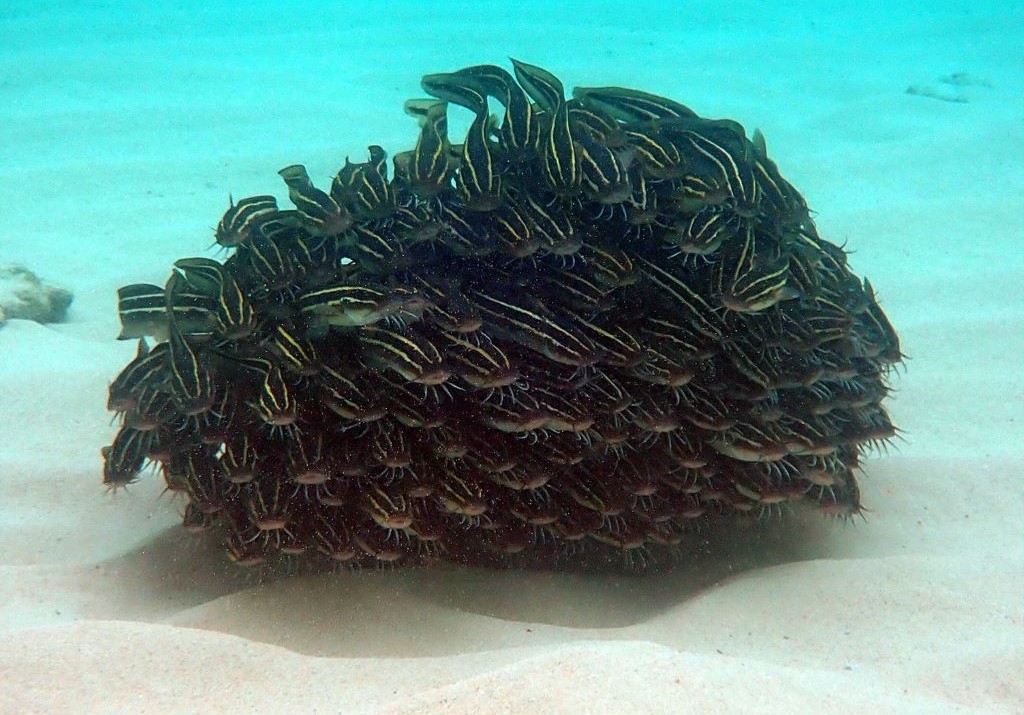
Was I just looking back through a rose-tinted snorkelling mask? I was quite willing to believe I was. Memories do play tricks. In the 90s, photography was still analogue, and we didn’t own what would then have been a very expensive underwater camera, so I had no evidence to support my hunch that the reef was struggling. But all that changed when I received a hardy little underwater camera for Christmas 2019, and decided that although I didn’t have records from more than twenty years ago, now was the time to draw a line in the sands of Emily Bay and start observing, identifying and recording what I saw.
Every time I swam, I ventured out with my camera, photographing anything, in fact everything, I thought was interesting. I’d come home, upload the images and gaze in wonder at the stunning corals, and the beautiful anemones on my screen. I began to research the environment, to identify the different species of marine life, and to ask questions about what I was seeing.
Our lagoons and reef are a delicate, fragile and finely balanced ecosystem. In March 2020, on the back of a warmer than normal summer, we had an extensive bleaching event on the reef. I also became aware that the reef on Norfolk Island is, and has been for some time, under stress due to excessive nutrients flowing into the bays, both from the underground aquifer that runs into the bays and from the overland creeks running past the septic tanks of people’s homes and through the cattle pastures. The increased algal growth that I’d noticed was thriving in the high-nutrient environment.
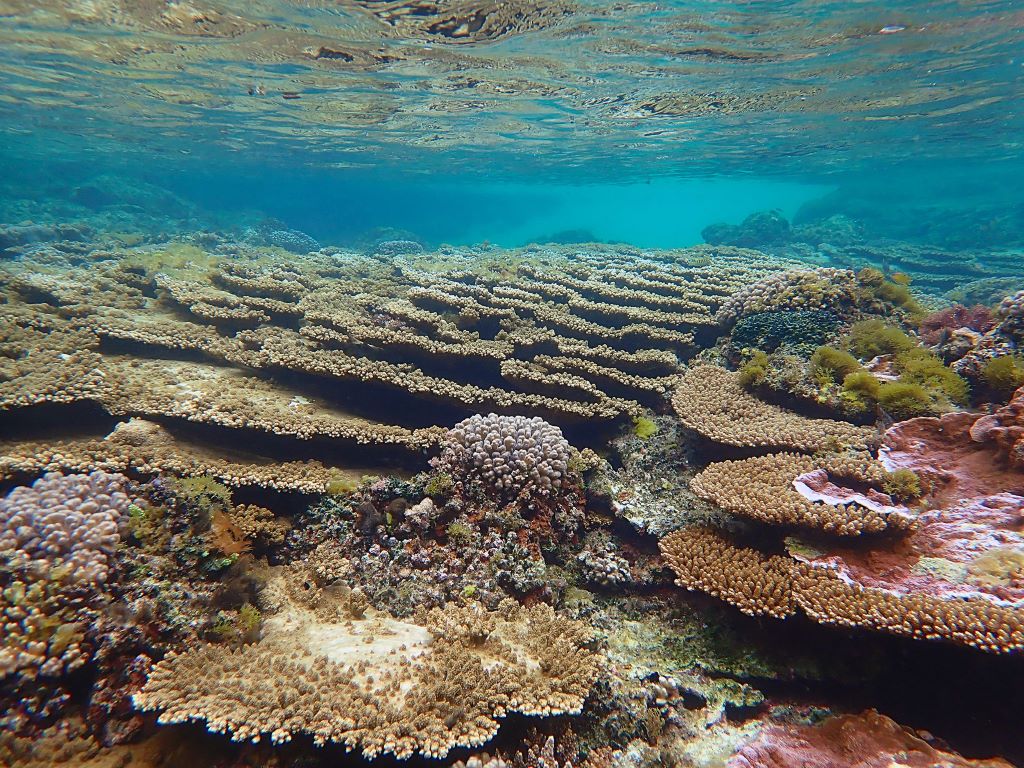
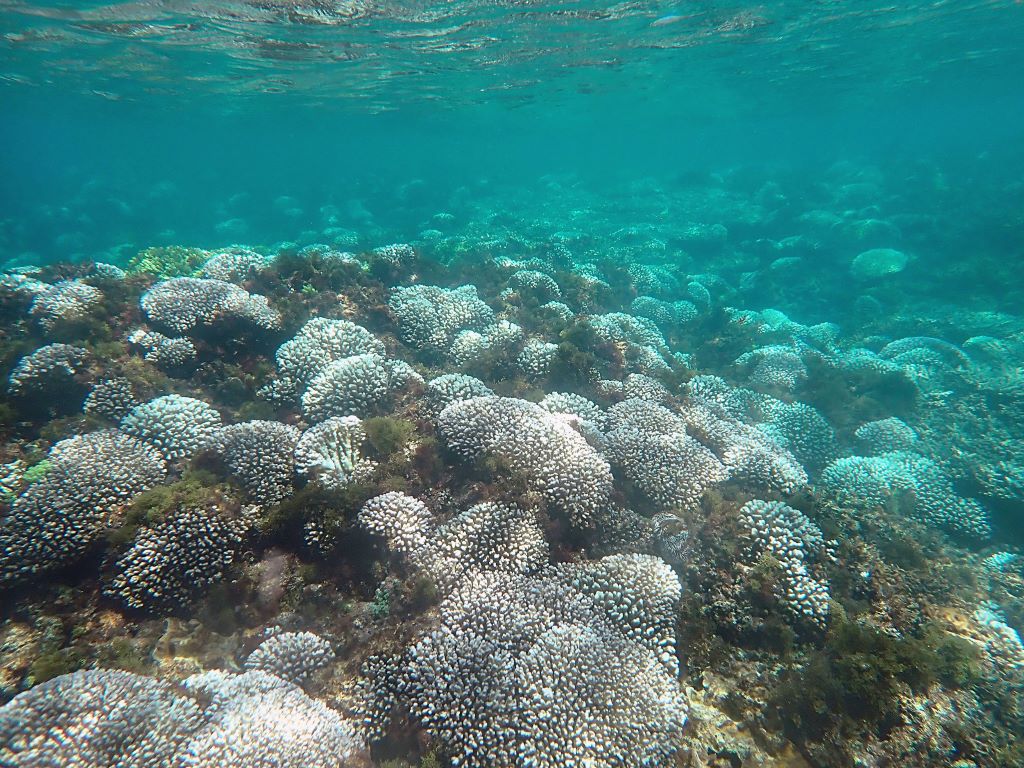
I quickly decided that now was the right time to make people aware of what we have and to value it. I began playing the long game to try to save the reef from a potential disaster. If people knew and valued what we had here, maybe they would be more inclined to protect and fight for it. I was finding my voice – refusing to go quietly beige into my retirement years. I would build a website showing everything that lay just under the waves in our lagoons. I would do it with no special whizz bang camera, no special lighting. Just me and a small camera.
Starting from a zero-knowledge base (but with an editor’s organisational research brain), and with a rapidly growing catalogue of photographs, I began to properly sort and identify my images. I’ve been fortunate to get to know a few locals, who, like me, are enthusiastic snorkellers. I can’t thank these people enough for their collective knowledge and wisdom. I set up a private hive-mind Facebook page where no one (me especially) feels silly asking the most basic questions. And, believe me, when I began these were really basic!
Gradually, I expanded my networks and sought assistance from broader communities of enthusiasts to help me get the taxonomy right when identifying species. For example, I had no idea that wrasse could change their appearance so enormously throughout their lifespan, or their sex for that matter. Nor did I have any clue about the roles of different fish within this ecosystem. I confused corals with anemones, anemones with corals. I am on a journey of learning and seeing new things. Every day.
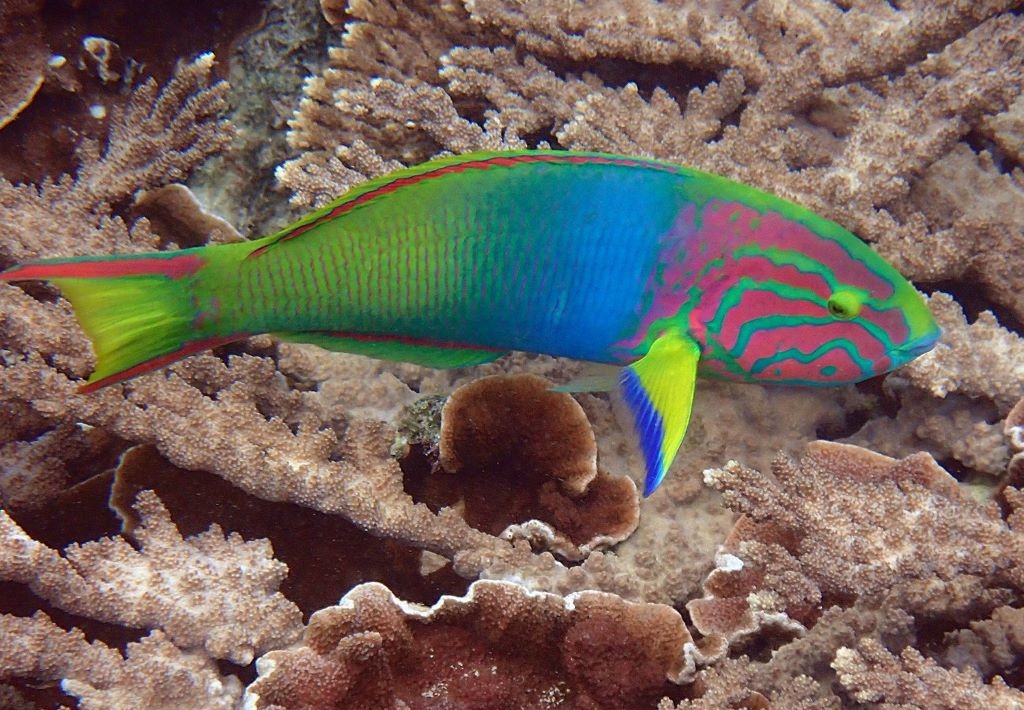
In November 2020, a client left me hanging for more than six weeks on a promise of work that never eventuated – a scenario familiar to every freelancer! That gave me the opportunity to bite the bullet and build my website. It’s still a work in progress, but it has become a passion. Not counting the time spent in the water photographing, I would think I have devoted more than 20 hours every week since I began, keeping the website updated with new species, swapping out old photos for new improved versions, writing blog posts, and more. I’m not sure this project will ever be something I can call ‘finished’.
One thing that has become clear to me on this journey is that we have some amazing things here on Norfolk Island – species that are rare and perhaps even endangered. Some species that are endemic to this island, and some that may even be new to science.
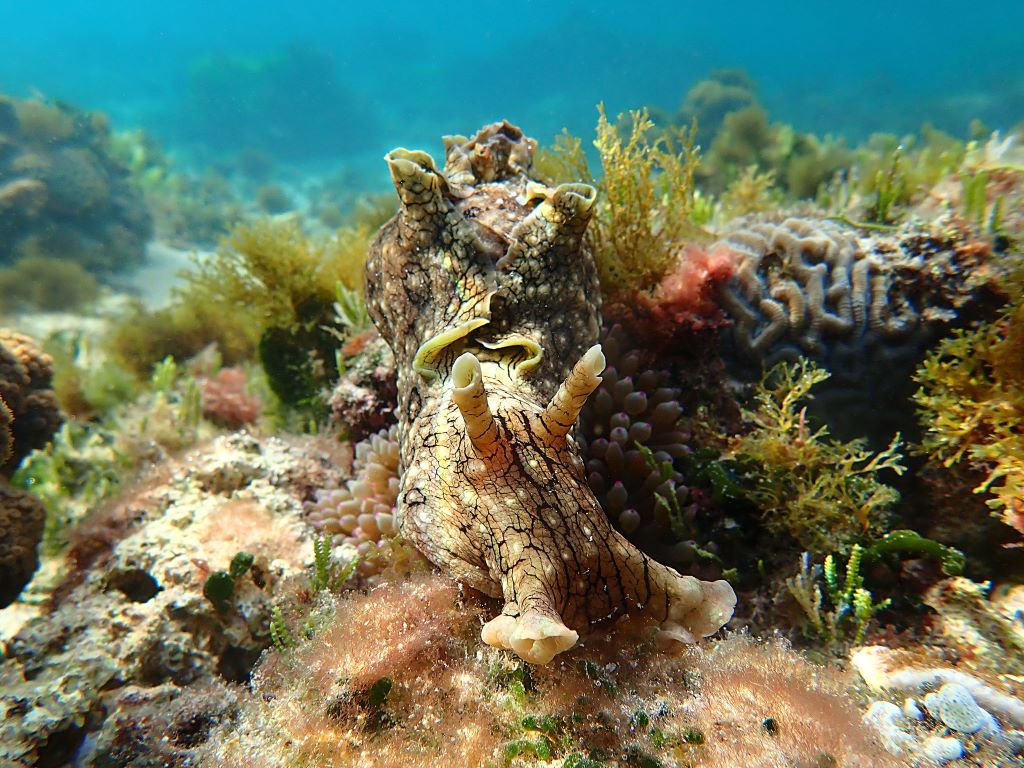
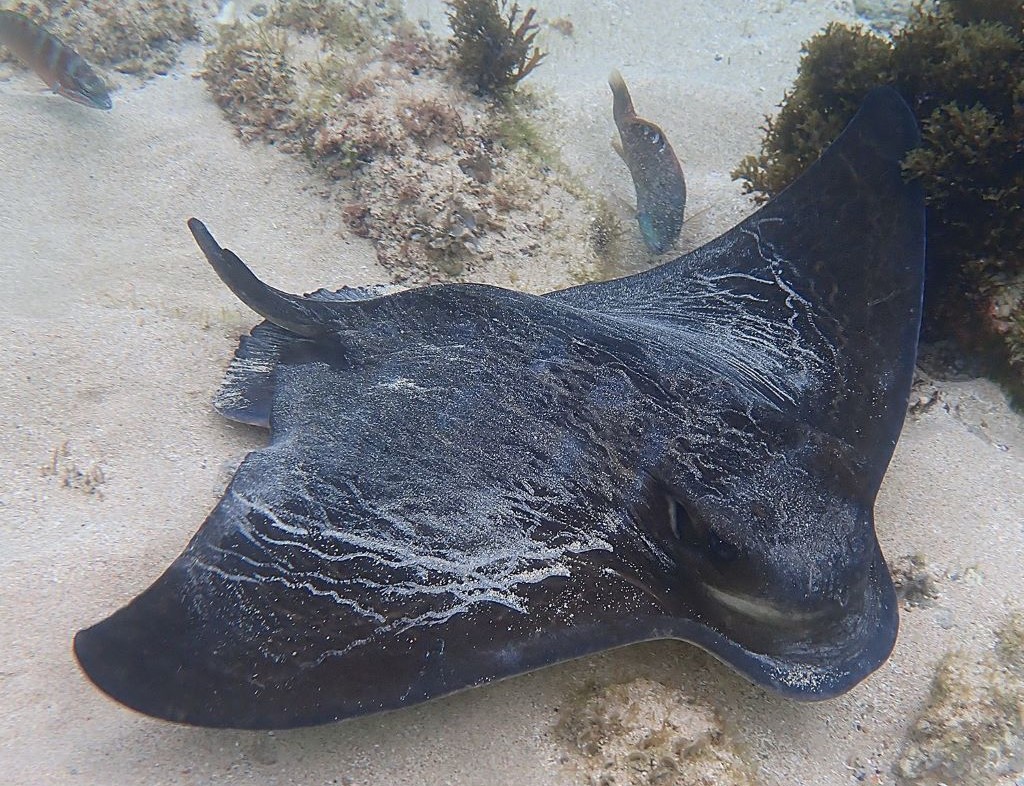
Hopefully, my long game is starting to pay off and I am beginning to raise awareness of this amazing habitat on our doorstep as the website gradually gains traction. I’ve been contacted by researchers from around the globe, some asking about my images of corals that they believe may be unique. I have submitted a jointly authored paper to a prestigious conchology publication on a rare mollusc found in our bays. And, hopefully, locals and visitors who read my blog and social media posts are also learning with me as I learn.
On a personal level, I now feel intense satisfaction in producing something that may not be perfect, but which I will keep improving; something that may be handy to someone, someday, so we can look back at this point in time on the reef. Hopefully, it will be to say, ‘yes, we still have those fish and coral there now’, and not, ‘so this is what we have lost’.
To see more of Susan’s Norfolk Island observations, follow her on Facebook or Instagram.
Banner image is of the clear water of Emily Bay lagoon on Norfolk Island. The image is courtesy of Susan Prior.

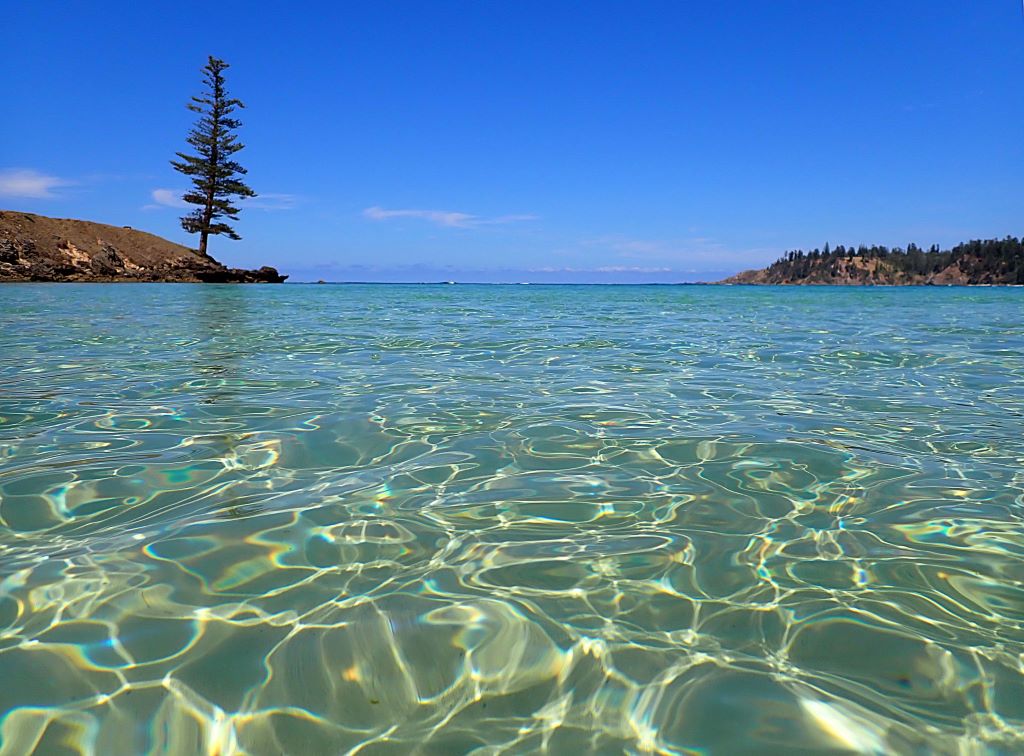
Leave a Reply